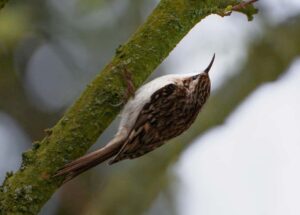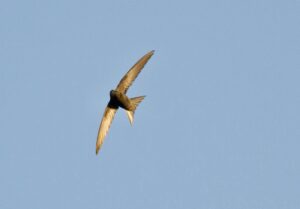On the 16th May a group of us went to St Mary with St Ethelbert Church in Luckington to carry out an emergency survey.
This was prompted by the discovery of a rare Lesser Horsehoe bat close by last year and we wanted to know if this was an isolated occurrence or whether there were more in the area. Furthermore, the individual found was a juvenile, suggesting there may be a maternity colony close by.
Within Luckington the church tower looked a probable place for use as a roost with multiple possible entry/exit routes on the tower and roof. We positioned ourselves at 5 points around the church, each group with a bat detector. So with camping chairs and flasks at the ready we waited for the sun to go down….

Luckily we weren’t disappointed. Plenty of bats flitted over our head once dusk hit and we could discern at least a couple of different species by sight – the quick flitting pipstrelle overhead and larger serotines zipping along the hedgerows. We also wandered down to the river and were treated to a beautiful display of Daubenton’s bats skimming low across the water up and down.
We recorded bat calls on a variety of different detectors – EchoMeter Touch 2 Pros which make recordings of the calls and provide suggsted IDs, a basic but reliable heterodyne detctor and Phil Atkins’ (aka ‘Pip Detector’) new “Griff” detectors which turns your phone into a bat detector with the help of a bespoke microphone and some software he has developed. As an aside, Phil has put in an incredible amount of effort to develop affordable bat detectors, which is making bat surveying so much more accessible to all.
We spent some time verifying the calls with the help of Phil Atkins, some auto-ID software(s) and visual checking of the call recordings, and were pleased to confirm the following species: Daubenton’s (Myotis daubentonii), Common pipistrelle (Pipistrellus pipstrellus), Serotine (Eptesicus serotinus), Noctule (Nyctalus noctula), Brown long-eared (Plecotus auritus) and the rarer Barbastelle (Barbastella barbastellus) and Lesser Horseshoe (Rhinolophus hipposideros). Some of the calls are shown below (in order from top to bottom: Common pipstrelle, Daubenton’s and Lesser Horseshoe). All of these records were submitted to the Bat Conservation Trust to help with local and national monitoring efforts.

Strangely enough we didn’t see any bats emerge from the church tower. Therefore, where the Lesser Horseshoes roost remains a mystery we have yet to uncover! However it was still a fantastic night with some excellent species recorded.
We would like to give a huge thanks to St Mary with St Ethelbert Church for allowing us to carry out this survey on their grounds.




